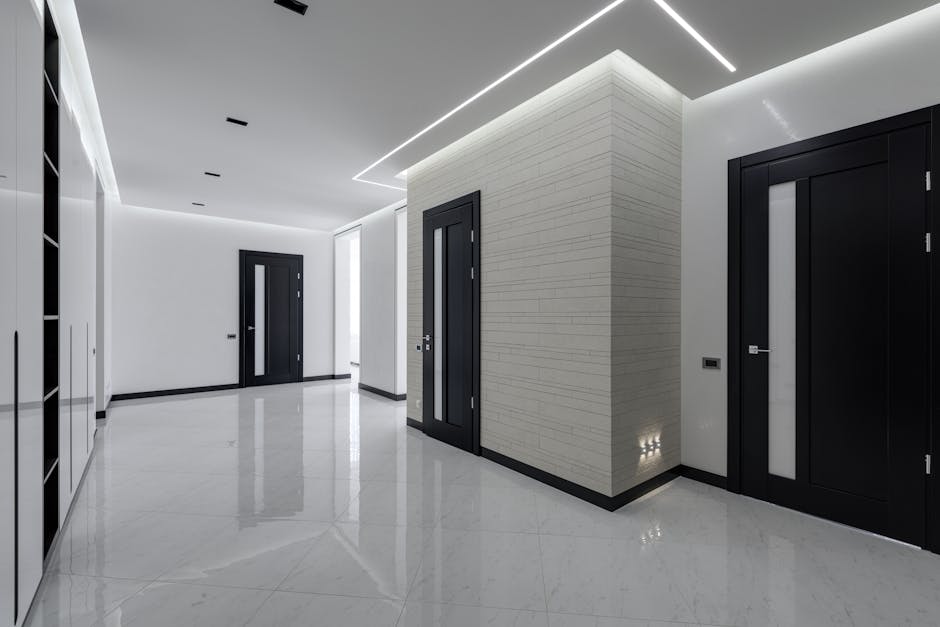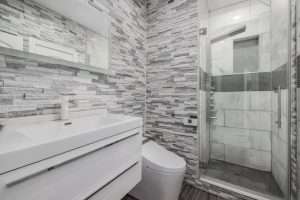Creating a Cinematic Experience: Home Theater Lighting Design Tips
Creating the perfect home theater lighting design involves more than just turning off the lights. To transform your space into a true cinematic experience, you’ll need to consider various lighting types and how they contribute to the ambiance and functionality of the room.
For those short on time, here’s a quick answer:
– Use recessed lighting to prevent screen glare.
– Install wall sconces for soft, indirect light.
– Add LED or fiber optic strips to define floor or baseboard edges.
– Utilize task lamps for focused illumination near seating.
– Ensure all lights are dimmable and can be remote-controlled.
Home theater lighting design sets the mood and enhances visual comfort. Ambient lighting minimizes distractions, while dimmable options allow seamless transitions between movie watching and cleaning. Smart controls enhance ease of use, letting you adjust settings from your seat.
My name is Bob Berriz, and for over 30 years, I’ve been helping clients achieve their dream spaces. With expertise in home theater lighting design, I ensure that each project combines luxury with practical functionality.
Berriz Desing - Unique Design &Build Remodeling Services

Understanding Home Theater Lighting Basics
Creating the perfect ambiance in your home theater requires a good grasp of some basic lighting principles. Let’s break down the essentials: color temperature, light spillage, and the difference between ambient and task lighting.
Color Temperature
Color temperature is measured in degrees Kelvin (K) and it affects the mood of your home theater. Cooler temperatures (above 5,000K) emit a blueish light, while warmer temperatures (below 3,000K) emit a yellowish light. For a cozy and immersive theater experience, aim for a color temperature around 6,500K. This mimics natural daylight, reducing eye strain and making the screen’s colors pop.
Light Spillage
One crucial rule in home theater lighting design is to avoid light spillage onto the screen. Light spillage can wash out the picture and diminish the viewing experience. To prevent this, use directional lighting like recessed lights or wall sconces. These fixtures focus light downward or sideways, keeping it away from the screen.
Avoid ambient light sources like bare bulbs or daylight from windows. Instead, opt for blackout curtains and dark-colored walls and ceilings to absorb excess light.
Ambient vs. Task Lighting
Understanding the difference between ambient and task lighting is key to designing an effective home theater:
-
Ambient Lighting: This is the general lighting that illuminates the room. It sets the mood and makes the space comfortable. Examples include cove lighting or LED strips that provide a soft, even glow without causing glare. Ambient lighting should be dimmable to allow for adjustments based on the activity.
-
Task Lighting: This lighting is more focused and used for specific tasks, such as reading or navigating the room. Examples include seat-side lamps with opaque shades or LED lights under stairs. Task lighting ensures safety and convenience without disrupting the movie-watching experience.
By balancing these lighting types and paying attention to color temperature and light spillage, you can create a home theater that is both functional and immersive.

Next, we’ll dive into selecting the right lighting for your home theater, covering options like recessed lighting, wall sconces, LED strips, and more.
Selecting the Right Lighting for Your Home Theater
Choosing the right lighting for your home theater is crucial to creating the perfect ambiance. Let’s explore some top lighting options and tips for their effective use.
Recessed Lighting
Recessed lighting is a favorite for home theaters because it produces minimal TV glare and provides uniform illumination. These lights are installed into the ceiling, making them unobtrusive and sleek.
- Fixture Wattage: Opt for lower wattage bulbs to avoid overly bright lighting. Dimmable options are ideal.
- Placement: Space the lights evenly across the ceiling. Smaller diameter lights (like 2-3 inches) can be more effective and less intrusive.
Wall Sconces
Wall sconces add a touch of elegance and can enhance the theater atmosphere. When placed correctly, they can also direct light away from the screen, minimizing distractions.
- Design Varieties: Choose from uplight, downlight, or a combination. Uplight and downlight sconces with integrated COB LEDs provide smooth, uniform light distribution.
- Installation Tips: Position sconces on the side walls to frame the screen. This draws attention to the TV and improves the viewing experience.
![]()
Ambient Lighting
Ambient lighting helps create a comfortable and inviting viewing environment. The key is to use light with the right color temperature.
- Kelvin Scale: Use warm white lighting (2700K to 3000K). This temperature is gentle on the eyes and creates a relaxing atmosphere.
- Comfort: Ensure ambient lights are dimmable to adjust the brightness according to your needs.
LED and Fiber Optic Lighting Strips
LED and fiber optic lighting strips are versatile and can be used for both aesthetic and safety purposes.
- Floor and Baseboards: Install LED strips along the floor or baseboards to guide pathways. Always choose LED lights that do not generate heat.
- Safety: Fiber optic lights are another safe option, especially for in-floor installations.

Task Lamps
Task lamps are essential for activities like reading or navigating the room without disturbing others.
- Seating Arrangement: Place task lamps next to seating areas. Ensure they have opaque shades to minimize light spillage.
- Opaque Shades: These shades focus the light downward, making it easier to find things without lighting up the entire room.
By carefully selecting and positioning these lighting options, you can enhance your home theater lighting design and create a space that is both functional and immersive.
Innovative Home Theater Lighting Design Ideas
Starry Ceilings & Beyond
Imagine lying back and watching your favorite movie under a canopy of stars. Starry ceilings create this magical experience using fiber optic lighting. Tiny fiber optic strings are suspended from the ceiling, creating a “starry night” effect. This setup is perfect for adding a unique and immersive element to your home theater.
Installation Tips:
– Fiber Optic Kits: These kits come with everything you need, including a light source and fibers.
– Ceiling Panels: Install the fibers through pre-drilled holes in ceiling panels for a seamless look.
– Customization: You can even create constellations for a personalized touch.
Cove Lighting with Sconces
Cove lighting provides a soft, elevated glow along the perimeter of your ceiling. This type of lighting is ideal because it doesn’t cast reflections on your screen, ensuring an uninterrupted viewing experience.
Integration Tips:
– Architectural Elements: Install LED strips or fiber optic tubes between the crown molding and the ceiling.
– Complement with Sconces: Wall sconces can add another layer of subtle lighting. They should shine up and down without producing an outward glow. This helps to illuminate narrow spaces or rooms with low ceilings.
Bias Lighting for Comfortable Viewing
Bias lighting is placed behind your TV or projector screen to reduce eye strain. This type of lighting creates an ambient halo that contrasts with the brightness of the screen, making it easier on your eyes.
Placement Tips:
– Behind the Screen: Install LED strips or light bars behind your screen.
– Color Temperature: Aim for around 6,500 degrees Kelvin to produce the right level of bias lighting.
Mood Settings
Creating different mood settings can enhance your home theater experience. Use a combination of lighting types to set the perfect ambiance for various activities.
Ideas for Mood Settings:
– Romantic Movies: Soft, warm lighting for a cozy feel.
– Horror Films: Pitch-black with minimal ambient light to heighten suspense.
– Gaming: Bright enough to see controls but dim enough not to distract from the screen.
By integrating these innovative lighting ideas, you can elevate your home theater lighting design to create a space that is both functional and immersive.
Smart Lighting and Automation for Home Theaters
Smart lighting and automation can take your home theater experience to the next level. Imagine controlling your lights without leaving your seat or even using your voice to adjust the ambiance. Let’s dive into how smart LED bulbs, remote control, and voice activation can transform your home theater.
Smart LED Bulbs
Smart LED bulbs are a game-changer for home theater lighting. These bulbs come with built-in software that allows you to control them using an app on your smartphone or tablet. You can adjust brightness, change colors, and even set schedules.
Benefits of Smart LED Bulbs:
- App Control: Control your lighting from anywhere. Dim the lights for a movie or brighten them for cleaning with just a few taps.
- Color Changing: Create the perfect mood by changing the color of your lights. For example, use soft blue hues for a calming effect or vibrant reds for an action-packed film.
- Energy Efficiency: LEDs are more energy-efficient than traditional bulbs, saving you money on your electricity bill.
Remote Control and Voice Activation
Gone are the days of fumbling for a light switch. With remote control and voice activation, you can manage your home theater lighting effortlessly.
Remote Control:
- Convenience: Use a smart remote to control your lights without getting up. Adjust brightness, switch between different lighting scenes, and more.
- Integration with Smart Home Systems: Many smart lighting systems can be integrated with platforms like Amazon Alexa or Google Assistant, allowing for seamless control.
- Hands-Free Operation: Simply say commands like “Alexa, dim the lights” or “Hey Google, set the lights to movie mode” to adjust your lighting.
- Customization: Set up voice commands for different scenarios. For example, “movie time” could dim the lights and “intermission” could brighten them slightly.
Automation:
- Set Schedules: Automate your lights to turn on or off at specific times. This is perfect for creating a routine, like dimming the lights as your movie starts.
- Scene Creation: Program specific lighting scenes for different activities. For example, a “movie night” scene could dim the lights and change their color to a soft blue.
By integrating smart lighting and automation into your home theater, you can create a more immersive and convenient viewing experience. Whether through app control, remote control, or voice activation, these technologies offer unparalleled flexibility and ease of use.
Frequently Asked Questions about Home Theater Lighting Design
What is the best color light for a home theater?
The best color light for a home theater is warm white. This color temperature, typically around 2700K to 3000K, creates a cozy and inviting atmosphere. Warm white light is less likely to cause eye strain and provides a more comfortable viewing experience.
Incorporating LED strip lighting around the room or under seats can add soft, warm accents without overwhelming the space. These lights can also be dimmed to achieve the perfect ambiance for movie nights.
What is the best light temperature for a home theater?
The ideal light temperature for a home theater is between 2700K and 3000K. This range falls under warm white light, which helps create a relaxing environment.
Using lights with a dimmable feature allows you to adjust the brightness to your liking. This flexibility ensures that the lighting complements the screen’s visuals without causing glare or discomfort.
What is the standard lighting for a Theatre?
Standard theater lighting includes a combination of task, accent, and ambient lighting:
-
Task Lighting: Provides illumination for specific tasks, such as navigating through the room. Examples include recessed ceiling lights and floor lamps.
-
Accent Lighting: Highlights architectural features or decor. Wall sconces and LED strips are popular choices for this purpose.
-
Ambient Lighting: Sets the overall mood of the room. This can be achieved through dimmable overhead lights or smart LED bulbs that can change color and brightness.
By combining these types of lighting, you can create a safe and immersive home theater environment. This blend of lighting types ensures that you have enough visibility to move around while maintaining the ideal atmosphere for watching movies.
Conclusion
In summary, the right home theater lighting design can transform your movie-watching experience from ordinary to extraordinary. By thoughtfully combining different types of lighting—recessed lights, wall sconces, LED strips, and ambient lighting—you can create a safe, comfortable, and immersive environment.
Enhancing the Experience
Lighting is not just about visibility; it’s about creating an atmosphere. Imagine walking into your home theater, where the soft glow of cove lighting highlights the room’s architectural features, and the twinkling star ceiling sets the perfect backdrop. The right lighting can make you feel like you’re stepping into a private cinema, enhancing your overall experience.
At Berriz Design Build, we specialize in bringing the elements of a professional movie theater into your home. Our team is dedicated to helping you design a home theater that meets your needs and exceeds your expectations. From selecting the perfect lighting to choosing comfortable seating, we’re here to guide you every step of the way.
Ready to transform your home theater? Contact us today to start designing the home theater of your dreams!





